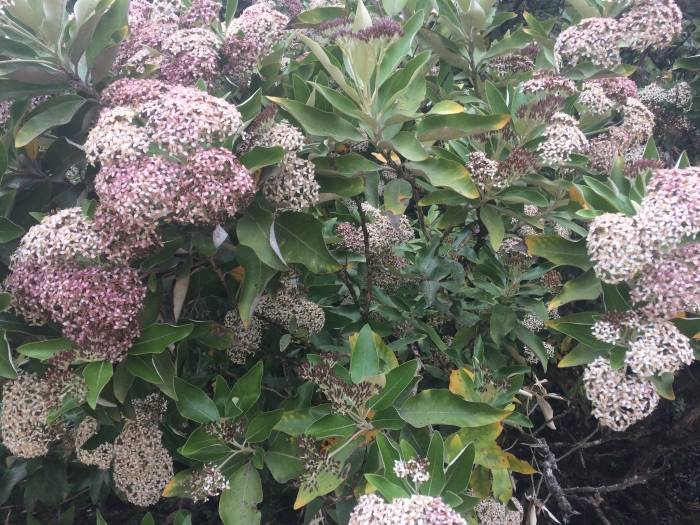Mountain Akeake
(Olearia avicenniifolia)
Mountain Akeake (Olearia avicenniifolia)
/
/

Leon Billows
Public Domain
Image By:
Leon Billows
Recorded By:
Copyright:
Public Domain
Copyright Notice:
Photo by: Leon Billows | License Type: Public Domain | License URL: http://creativecommons.org/publicdomain/zero/1.0/ | Rights Holder: Leon Billows | Publisher: iNaturalist | Date Created: 2019-03-09T22:33:43Z |


















































Estimated Native Range
Summary
Olearia avicenniifolia, commonly known as Mountain Akeake, is an evergreen shrub native to New Zealand’s South Island, where it thrives in subalpine scrub and tussock grasslands, as well as in coastal areas and along river terraces. It typically grows to a height of up to 6 meters and a width of 3 meters, featuring thin, papery bark that can be an identifying characteristic. The plant’s leaves are leathery and often have a glossy surface with a grey-green hue. Its flowers, which are about 5 centimeters wide, are clustered in groups of three to ten and exhibit a daisy-like appearance with white rays and purple central disks. These blooms are known for their sweet scent and emerge between November and February, contributing to the plant’s ornamental value.
Mountain Akeake is valued for its attractive, sweet-scented flowers and its ability to withstand dry conditions once established, making it suitable for xeriscaping. It is often used in native plant gardens, as a specimen shrub, or for revegetation projects. Its adaptability to various soil types, provided they have good drainage, and its preference for full sun make it a versatile choice for gardeners. While it is generally low-maintenance, it can be susceptible to root rot in poorly drained soils and may require protection from frost in colder climates.CC BY-SA 4.0
Mountain Akeake is valued for its attractive, sweet-scented flowers and its ability to withstand dry conditions once established, making it suitable for xeriscaping. It is often used in native plant gardens, as a specimen shrub, or for revegetation projects. Its adaptability to various soil types, provided they have good drainage, and its preference for full sun make it a versatile choice for gardeners. While it is generally low-maintenance, it can be susceptible to root rot in poorly drained soils and may require protection from frost in colder climates.CC BY-SA 4.0
Plant Description
- Plant Type: Shrub
- Height: 5-10 feet
- Width: 4-10 feet
- Growth Rate: Moderate
- Flower Color: White
- Flowering Season: Spring, Summer
- Leaf Retention: Evergreen
Growth Requirements
- Sun: Full Sun
- Water: Low
- Drainage: Medium, Fast
Common Uses
Bee Garden, Butterfly Garden, Fragrant, Hedges, Low Maintenance
Natural Habitat
Native to New Zealand’s South Island, thriving in subalpine scrub, tussock grasslands, coastal areas, and along river terraces
Other Names
Common Names: Mangrove-Leaf Daisybush, Akeake
Scientific Names: , Olearia avicenniaefolia, Olearia avicenniifolia, Eurybia avicenniifolia, Shawia avicenniifolia, Aster avicenniifolia, Aster avicenniifolius, Aster avienniifolius,
GBIF Accepted Name: Olearia avicenniifolia (Raoul) Hook.fil.